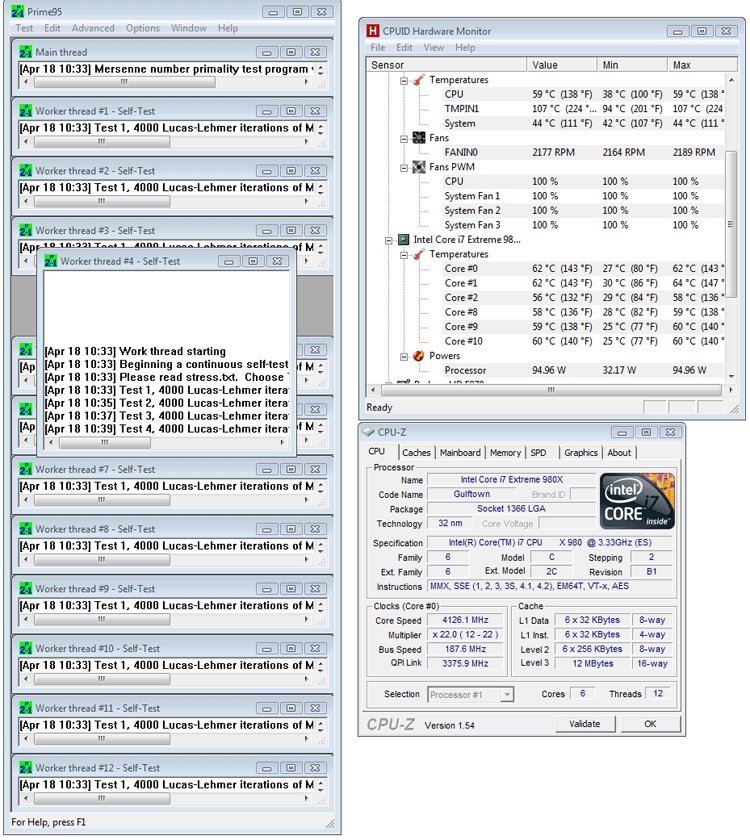The OC Genie Overclocking
The OC Genie
Now I promised to talk you through that OC Genie button / functionality for a minute, I am just really impressed with it. Who would use the OC genie? Well, some of you guys do not have the skills or time to overclock your PC. If this applies to you, then this might be the best thing since the invention of the wheel really -- okay that's an overstatement ;)
So I feel that typically most automated overclock functions paired with motherboards are software based and work a little so-so. Often the overclocks are too small to really notice any real difference in performancee. And that's just not the case with OC Genie, a one-touch automatic overclocking solution.

Here's the idea: when you powered down your PC, you can you push the button above (lights up in blue) which activates OC Genie (a little IC on the motherboard). This chip will automatically determine and implement an optimal overclock setting. It'll take merely seconds and the end result is quite a significant overclock.
Take a look at the screenshots below, we have the 3.33 GHz Core i7 980X installed here. We press the OC Genie button which then lights up blue, we power on the PC, wait like 3~4 seconds and voilla, the system starts to POST.
Our PC all of the sudden is clocked at 4126 MHz (!), and here's the shocker -- it's really a stable overclock. Once successful, the OC will be saved automatically, thus the next time you power up your PC the overclock is still applied (until you release the OC Button) . To go back to default / initial conditions, just press the OC Genie button once more (release) and restart the PC.
This is a fool-proof solution offering quite a nice overclock. Check out the stress test with Prime95 session below. Mind you that we did opt liquid cooling on the processor and to achieve similar results you will need very decent cooling.

Again, overclocking means increased voltages, multipliers and so on .. as the screenshot above already shows, you need to have decent airflow in the chassis cooling down the passive cooled heatsinks, but of course the CPU cooler needs to be of serious caliber.
